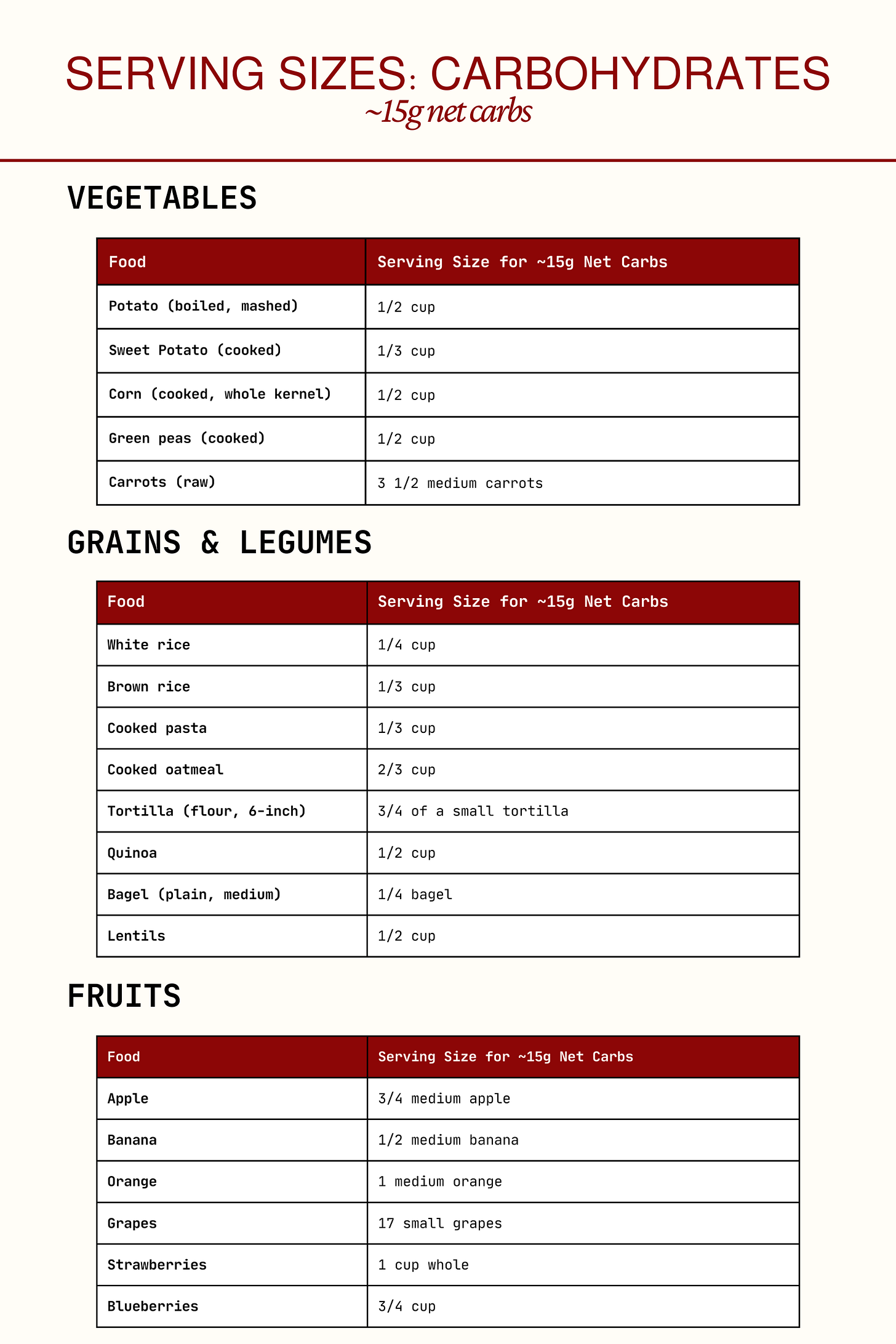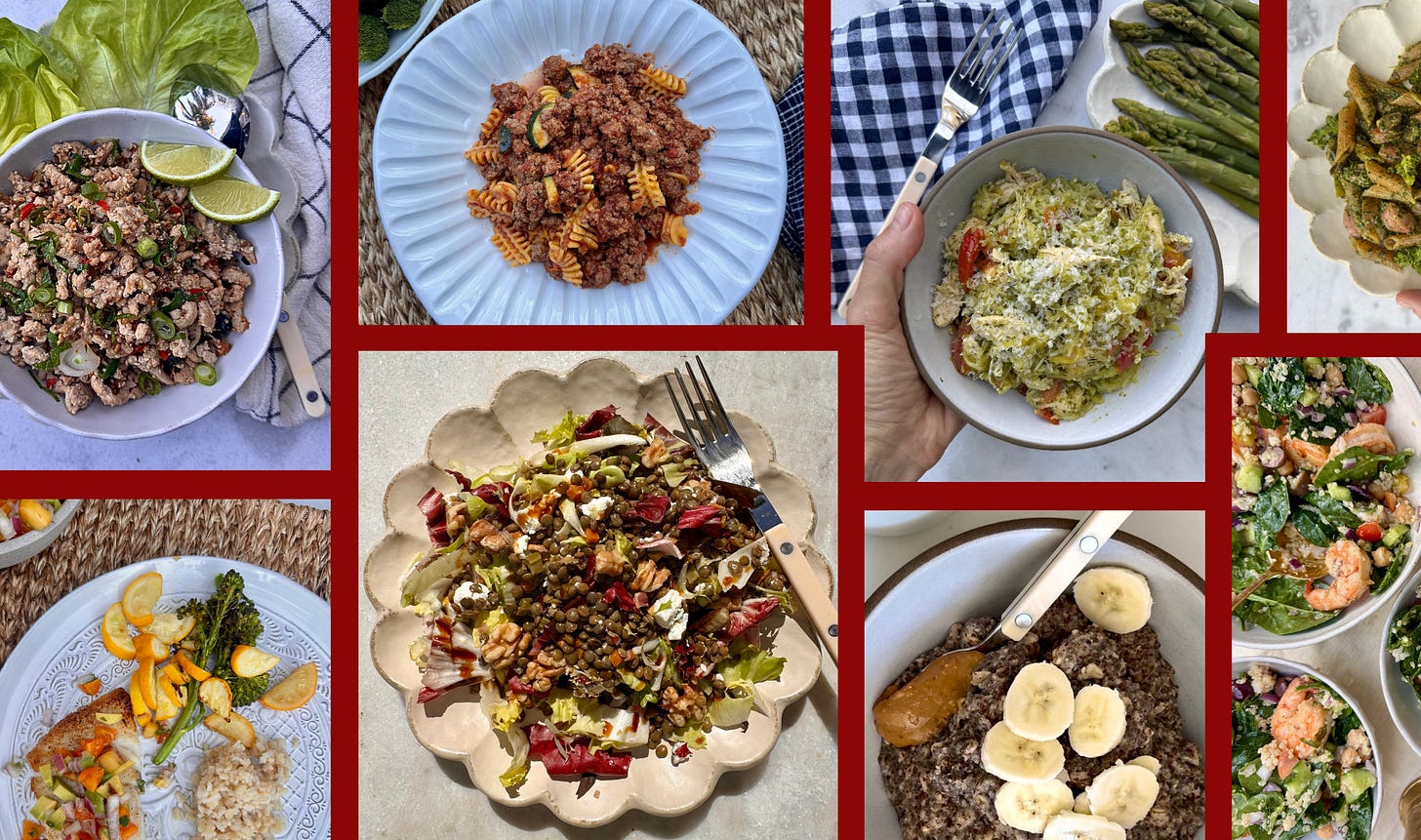It’s a tale as old as time: a woman goes on a low carb diet, miserably suffers to lose a few pounds only to gain them back (and all her self control).
So many of my clients come to me frustrated and disappointed with themselves about their inability to stick to a low carb diet. It’s a debilitating experiment that I once toyed with too, and let me tell you, it’s oh so liberating not to think about this anymore.
There’s certainly a case for being mindful of your carbohydrate intake. Carbohydrates, especially the refined ones like sugar, white rice, pasta, white bread, etc, have very little nutrient value, are high in calories, and can spike your blood sugar, potentially leading to inflammation, weight gain, cravings, increased cortisol, and, over time, diabetes.
But less—or should I say, more strategic—carb intake is very different from no carbohydrates at all, which is not something I recommend for most women and more often than not leads to binge-like behavior. When coming up with a nutrition plan, I’m always thinking long term. There’s just no world in which we’re never having a piece of toast again, so let’s just throw that option out the window and try a more measured approach.
Here are five considerations to keep in mind about your carbohydrate intake.
1. Not all carbs were created equal.
Fiber is a carbohydrate and it’s very, very good for you. You’ll find fiber in whole foods like fruits, vegetables, legumes, whole grains, nuts, and seeds. In fact, when looking at carbohydrate intake, we subtract the fiber from the total carb count to give us the net carbs.
When buying packaged products, I always look at the carb to fiber ratio. This means, how many grams of carbs am I eating for every gram of fiber. Let’s look at sourdough bread versus Ezekiel bread, for example:
You can see from the ingredients that Ezekiel bread has whole grains, legumes and seeds—it has 15 grams of total carbs and 3 grams of fiber, which is a ratio of 5:1. For every 5 grams of carbs, you get 1 gram of fiber—an excellent ratio! You can have two slices of Ezekiel bread for the nearly the same amount of “net” carbs as 1 slice of organic sourdough. Plus, you’d get 10 grams of protein and 6 grams of fiber (not bad!).
*For the record, I love sourdough and buy it often, this is just a consideration.
2. Pair your carbs wisely.
The glycemic index of an ingredient is different than the glycemic load of a meal. Glycemic index measures the impact of a certain food on your blood sugar. Pairing a higher carb food with protein, fiber, and fat, can stabilize the blood sugar response (glycemic load). White rice, for example, is pretty high carb, but if you pair it with some chicken, for example, for protein, sautéed vegetables for fiber, and cashews for fat, you will lower the overall impact on blood sugar. In this case, the carbs will likely be balanced by the protein, fiber, and fat in the meal (depending on the portion).
3. Be mindful of portion sizes.
I am always going on about meeting your daily protein goals (.7-1 gram per pound of ideal body weight). But what about carbs? If you’re trying to lose weight or build muscle, you should eat near equal amounts of protein and carbs or slightly less carbs. So if you’re eating 100 grams of protein, what does that look like for carbs? Let’s say a serving of carbs is 15 (net) grams. That means 7 servings is 105 grams, so (if weight loss or muscle gain is a goal) try to stay around or under 7 servings per day. (This is obviously hypothetical, as your exact goals and numbers will likely be different.)
Here is a list of carb sources and what a 15 gram-serving looks like:
One thing I find interesting here is that you get slightly more bang for your buck with sweet potatoes and brown rice over white potatoes and white rice. Plus, quinoa has half the carbs of white rice—sign me up for that bigger serving size.
4. Think about why you reach for carbohydrate-rich foods.
Carbohydrates provide a quick burst of energy and stimulate a dopamine response, which is why we often crave them when tired, stressed, or feeling down. However, highly refined carbs and sugars can cause rapid blood sugar spikes and crashes, which may lead to increased cravings and a cycle of overeating.
Pay attention to why and how you’re consuming carbs. If they’re a balanced part of your meal, great! But if you feel an urgent craving, consider adding protein or fiber to stabilize your blood sugar, drinking water to check for dehydration, taking deep breaths, or getting some movement in, like a short walk. These small changes can help you regulate cravings and energy levels, and have more control over your carbohydrate intake.
5. Ladies, where are you in your cycle?
Women have monthly hormonal changes that men don’t experience, which impacts our energy needs and how we process carbohydrates. Research into this area of women’s health deserves much more attention, but studies confirm what we’ve known all along: appetites and cravings for carbs and fats increase during the second half of a woman’s cycle. This is completely normal and biological—and if you feel vindicated by this information, you should.
If this is the time of the month you feel like you “fall apart,” try focusing on nutrient-dense complex carbs like sweet potatoes, lentils, quinoa, beans, starchy vegetables and fresh fruit, and pairing them with adequate protein to help maintain stable blood sugar levels and reduce cravings.
Okay, now let’s get to the fun part. Here are some of my favorite ways to add a healthy amount of carbs to a meal.
✔️ Veg and protein-heavy pasta: When making pasta, cut the portion size in half (generally from two ounces to one ounce), add more vegetables and a protein-rich sauce. Check out the Lazy Bolognese recipe I shared with Goop (which was also on the Sunday Meal Prep menu this week!).
✔️ An open-faced sandwich: If you’re trying to eat fewer carbs but not no carbs, try one piece of bread instead of two. For some reason, I like a fork and knife sandwich—I’ll add some hummus followed by smoked salmon, roasted turkey, or tuna salad on top and serve with some mixed greens on the side.
✔️ Lentils with everything: A cup of cooked lentils has 40 grams of total carbs plus a whopping 16 grams of fiber and 18 grams of protein (so that’s 24 grams of net carbs). I love having a batch of cooked lentils in the fridge to add to salads, bowls, etc. I dedicated an entire Substack to lentils not too long ago.
✔️ Grains in a salad: I love to add brown rice or quinoa to a big salad. I’ll use about 1/2 a cup for two people, like in my Shrimp and Quinoa Salad (also on the Sunday Meal Prep menu this week). You don’t need that much when you have a lot of greens, crunchy vegetables, a protein, and a little cheese.
✔️ Spaghetti squash: One cup of cooked spaghetti squash has 10 grams of carbs and 2 grams of fiber. Compare that to a traditional spaghetti, which has 43 gras of carbs and 2-3 grams of fiber in the same serving. I love spaghetti squash with turkey meatballs and tomato sauce or pesto and chicken.
✔️ Not cauliflower rice: The brown and cauliflower rice pilaf is one of my favorite recipes in my cookbook, Foodwise. I know cauliflower rice is boring as hell, but I swear it adds to this dish’s complexity and allows for a double portion by cutting the rice in half.
This post is free for all subscribers. If you like this content and want to see more of it, please consider giving it a heart or sharing it on Substack notes, Instagram, sending to a friend, or becoming a paid subscriber. This helps me increase the visibility of my little Substack and allows me to create more content for you all.
Thank you, as always, for being here!
xx Mia











Love this post, I needed this information so much good stuff in there!
This is so helpful, Mia! Thank you!!🙏🏼